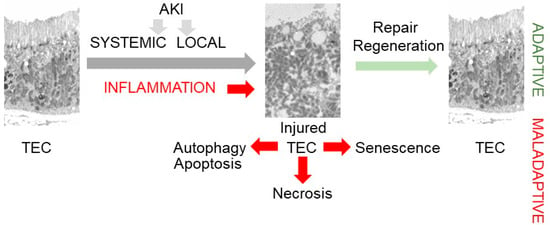Currently, the widely used active form of plant elicitor peptide 1 (PEP1) from
Arabidopsis thaliana is composed of 23 amino acids, hereafter AtPEP1
(1–23), serving as an immune elicitor. The relatively less conserved N-terminal region in AtPEP family indicates that the amino
[...] Read more.
Currently, the widely used active form of plant elicitor peptide 1 (PEP1) from
Arabidopsis thaliana is composed of 23 amino acids, hereafter AtPEP1
(1–23), serving as an immune elicitor. The relatively less conserved N-terminal region in AtPEP family indicates that the amino acids in this region may be unrelated to the function and activity of AtPEP peptides. Consequently, we conducted an investigation to determine the necessity of the nonconserved amino acids in AtPEP1
(1–23) peptide for its functional properties. By assessing the primary root growth and the burst of reactive oxygen species (ROS), we discovered that the first eight N-terminal amino acids of AtPEP1
(1–23) are not crucial for its functionality, whereas the conserved C-terminal aspartic acid plays a significant role in its functionality. In this study, we identified a truncated peptide, AtPEP1
(9–23), which exhibits comparable activity to AtPEP1
(1–23) in inhibiting primary root growth and inducing ROS burst. Additionally, the truncated peptide AtPEP1
(13–23) shows similar ability to induce ROS burst as AtPEP1
(1–23), but its inhibitory effect on primary roots is significantly reduced. These findings are significant as they provide a novel approach to explore and understand the functionality of the AtPEP1
(1–23) peptide. Moreover, exogenous application of AtPEP1
(13–23) may enhance plant resistance to pathogens without affecting their growth and development. Therefore, AtPEP1
(13–23) holds promise for development as a potentially applicable biopesticides.
Full article
 IJMS
IMPACT
IJMS
IMPACT Applied Sciences
IMPACT
Applied Sciences
IMPACT Sustainability
IMPACT
Sustainability
IMPACT Sensors
IMPACT
Sensors
IMPACT JCM
IMPACT
JCM
IMPACT Energies
IMPACT
Energies
IMPACT Molecules
IMPACT
Molecules
IMPACT Materials
IMPACT
Materials
IMPACT Remote Sensing
IMPACT
Remote Sensing
IMPACT Cancers
IMPACT
Cancers
IMPACT Electronics
IMPACT
Electronics
IMPACT Mathematics
IMPACT
Mathematics
IMPACT Foods
IMPACT
Foods
IMPACT Buildings
IMPACT
Buildings
IMPACT Plants
IMPACT
Plants
IMPACT Nutrients
IMPACT
Nutrients
IMPACT Animals
IMPACT
Animals
IMPACT Polymers
IMPACT
Polymers
IMPACT Water
IMPACT
Water
IMPACT Diagnostics
IMPACT
Diagnostics
IMPACT Biomedicines
IMPACT
Biomedicines
IMPACT Agronomy
IMPACT
Agronomy
IMPACT Microorganisms
IMPACT
Microorganisms
IMPACT Processes
IMPACT
Processes
IMPACT Healthcare
IMPACT
Healthcare
IMPACT Forests
IMPACT
Forests
IMPACT Cells
IMPACT
Cells
IMPACT JMSE
IMPACT
JMSE
IMPACT Medicina
IMPACT
Medicina
IMPACT Viruses
IMPACT
Viruses
IMPACT Agriculture
IMPACT
Agriculture
IMPACT Nanomaterials
IMPACT
Nanomaterials
IMPACT IJERPH
IJERPH
 Land
IMPACT
Land
IMPACT Pharmaceutics
IMPACT
Pharmaceutics
IMPACT Pharmaceuticals
IMPACT
Pharmaceuticals
IMPACT Religions
IMPACT
Religions
IMPACT Biomolecules
IMPACT
Biomolecules
IMPACT Life
IMPACT
Life
IMPACT Micromachines
IMPACT
Micromachines
IMPACT Atmosphere
IMPACT
Atmosphere
IMPACT Antioxidants
IMPACT
Antioxidants
IMPACT Genes
IMPACT
Genes
IMPACT Metals
IMPACT
Metals
IMPACT Symmetry
IMPACT
Symmetry
IMPACT Children
IMPACT
Children
IMPACT Coatings
IMPACT
Coatings
IMPACT Vaccines
IMPACT
Vaccines
IMPACT Horticulturae
IMPACT
Horticulturae
IMPACT Education Sciences
IMPACT
Education Sciences
IMPACT Minerals
IMPACT
Minerals
IMPACT Brain Sciences
IMPACT
Brain Sciences
IMPACT JPM
IMPACT
JPM
IMPACT Bioengineering
IMPACT
Bioengineering
IMPACT








